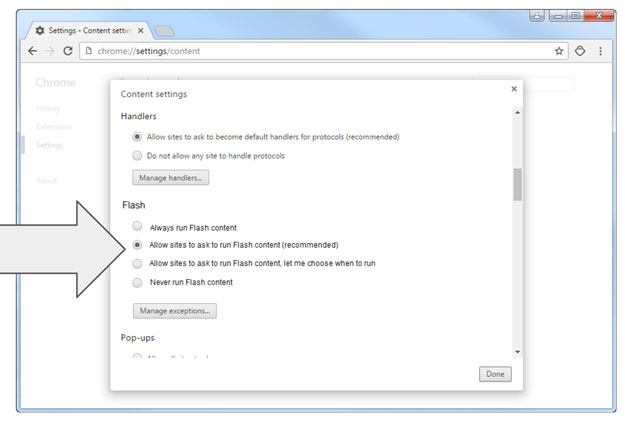Google Chrome Will Block Most Adobe Flash Content By Default Before Year’s End, Default To HTML 5
This week, we’re learning that Google is taking further steps to ensure Flash’s demise. Starting in the fourth quarter, Google Chrome will default to HTML5 instead of Flash. What this means is that if a website provides a choice of displaying either HTML5 or Flash content, HTML5 will always be favored. If Flash is absolutely mandatory, Google Chrome users will be given the option to run Flash if they choose to do so (but we strongly advise against it).

A mockup of the prompt users will see when Flash content wants to run
If Flash is required, a yellow prompt visible at the top of the page will ask for permission to allow content to play. Once the user accepts, the page will refresh and the content will be displayed. Your decision to accept Flash on a particular domain will be remembered so that subsequent visits won’t result in repeated requests to enable Flash.
If you’d like to make changes to this behavior, you can always visit the Setting page in Chrome to make adjustments:
There are, however, exceptions to this HTML5 mandate. Google is maintaining a list of the top 10 websites that are still heavily reliant on Flash and will allow them to default to Flash instead of HTML5. These sites include YouTube (a Google property), Facebook, Yahoo, Amazon and Twitch. Google will whitelist these domains for a year, after which the Flash exception expires.
It’s interesting that Google would exempt YouTube, which has for the most part switched over to HTML5 for videos, when it at the same time is trying to help eradicate Flash from the face of the earth. If anything, Google should be well ahead of most when it comes to make the HTML5 transition and shouldn’t need an exemption to fall back to Flash.
With that being said, this is just the latest effort by Google to help kill off Adobe Flash. Earlier this year, the company announced that it will no longer allow Flash display adds to run as of January 2nd, 2017.



